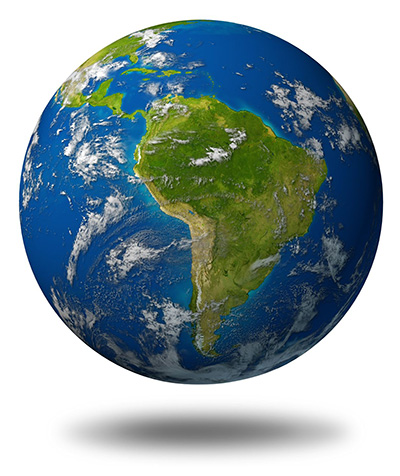 Latin America is one of the fastest growing regions in the field of personal care products, with Brazil taking the lead followed by Argentina, Mexico, Peru, Chile, Colombia, Venezuela, Paraguay, Uruguay and all of Central America. Multinationals such as Unilever/Alberto Culver, L’Oreal, P&G/Clairol, Colgate, and Wella dominate the three major regions, Brazil, Mexico and Argentina, which encompass over 75% of this market. While the market does appear to be attractive, it may be helpful to be aware of some the issues in this region.
Latin America is one of the fastest growing regions in the field of personal care products, with Brazil taking the lead followed by Argentina, Mexico, Peru, Chile, Colombia, Venezuela, Paraguay, Uruguay and all of Central America. Multinationals such as Unilever/Alberto Culver, L’Oreal, P&G/Clairol, Colgate, and Wella dominate the three major regions, Brazil, Mexico and Argentina, which encompass over 75% of this market. While the market does appear to be attractive, it may be helpful to be aware of some the issues in this region.
Range of ethnic populations and hair types
There is a varied range of ethnic populations, economic disparities and consumer habits within this region. Working productively requires a full appreciation of the various factors that can influence market success. In Argentina for example, the high usage of hair colorants and bleaches with resultant damage requires products that are rich in conditioning while in Mexico there is a high incidence of 2 in 1 shampoo users along with styling products. Low price point and high usage of hair relaxers still drives the Brazilian market, although recent shifts in the middle class are creating a demand for mid to premium brands.
Supply chain and R&D issues
To gain cost efficiencies, it is best to work with global suppliers on high volume key raw materials such as surfactants, silicones and fragrances. R&D should harmonize not only the raw material specifications but also the backbone of many of the common formulations within the region. It should also allow enough flexibility for formula adaptations to meet the local needs. This should result in easier roll out of new formulations, lower R&D costs and leverage in buying raw materials and equipment.
Regulations and product claims:
As markets grow, so does the regulatory environment in each of these countries, although trade associations are banding together to bring the regulations in line with international standards. Mexico, Chile, Colombia and Peru have formed an alliance called the Pacific Alliance with an objective of changing the regulations in these countries and to create a template for global harmonization. Regulations in claims substantiation also vary from country to country, and it is important to have a robust claims package tailored towards meeting local challenges before the products are launched. Spanish and Portuguese are the two main languages. Within a language, there are several interpretations for words that are used in these countries, which have to be recognized when claims dossiers are prepared.
The views, opinions and technical analyses presented here are those of the author or advertiser, and are not necessarily those of ULProspector.com or UL Solutions. The appearance of this content in the UL Prospector Knowledge Center does not constitute an endorsement by UL Solutions or its affiliates.
All content is subject to copyright and may not be reproduced without prior authorization from UL Solutions or the content author.
The content has been made available for informational and educational purposes only. While the editors of this site may verify the accuracy of its content from time to time, we assume no responsibility for errors made by the author, editorial staff or any other contributor.
UL Solutions does not make any representations or warranties with respect to the accuracy, applicability, fitness or completeness of the content. UL Solutions does not warrant the performance, effectiveness or applicability of sites listed or linked to in any content.



Leave a Reply or Comment